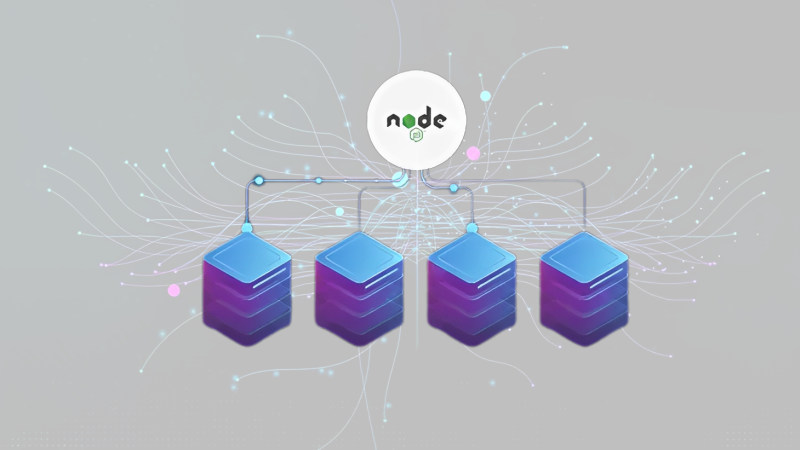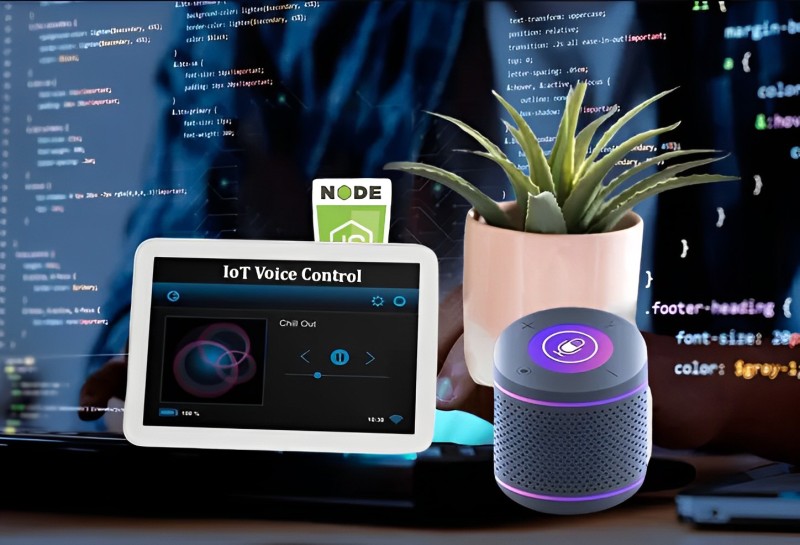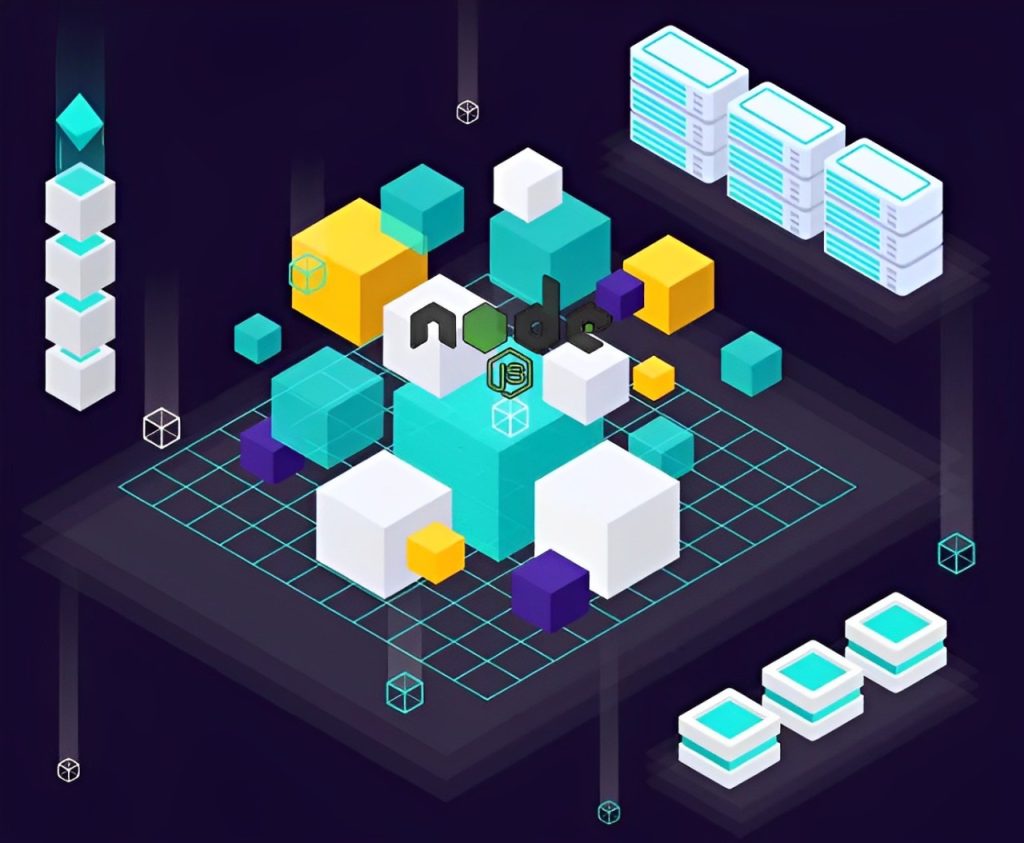Have you ever wrestled with a dozen different apps just to adjust your smart lights, control the thermostat, and turn on the robot vacuum? Managing fragmented smart home gadgets is a hassle – but Node.js offers a solution.
Using Node.js, we can build a unified control hub that integrates all these different appliances. A Java development company can enhance this solution by providing additional backend support and integration capabilities, ensuring robust performance and scalability.
This intelligent server can provide easy control of smart home devices from a single place – whether through voice assistants, mobile/web apps, or physical interfaces.
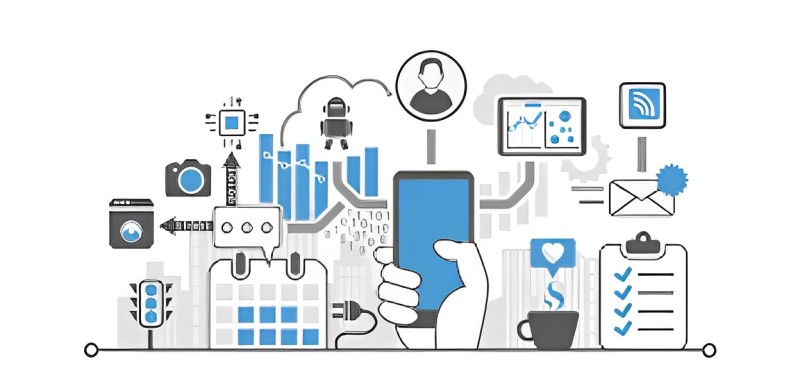
This guide will walk through designing and building an extensible Node. js-based platform to control and monitor various smart home devices.
We’ll cover how to discover and interface with appliances using protocols like Zigbee, Bluetooth, and WiFi.
We’ll add voice control capabilities using Alexa. We’ll build web and mobile apps for controlling devices from anywhere.
By the end, you’ll have learned how to create an elegant, centralized way to monitor and manage all your smart household gadgets and appliances using nodejs web development Services!
Step-by-Step Guide Smart Home Devices with Node.js and IoT
Let’s get started and dive into building the ultimate smart home control hub with Node.js.
Set up a Hub Computer to Run Node.js
To build our smart home control hub, we first need an always-on device for running the Node.js server software that will coordinate all our appliances and gadgets.
The compact Raspberry Pi minicomputer is perfect for this. It provides full computing capability in a low-powered and inexpensive platform.
Choose Raspberry Pi models like the 3 or 4 that contain built-in WiFi and Bluetooth radios for wireless communication with our smart devices.
We can attach peripherals like a USB microphone and speaker using the Pi’s GPIO pins if we eventually want to integrate voice controls. Setting up SSH access allows remote control of the Pi from other computers on the same network for simplicity.
With the Raspberry Pi hub fully set up and running Node.js, we now have an always-on mini computer that can host our automation server software to orchestrate all our smart home devices centrally.
Discover and Connect Smart Home Devices
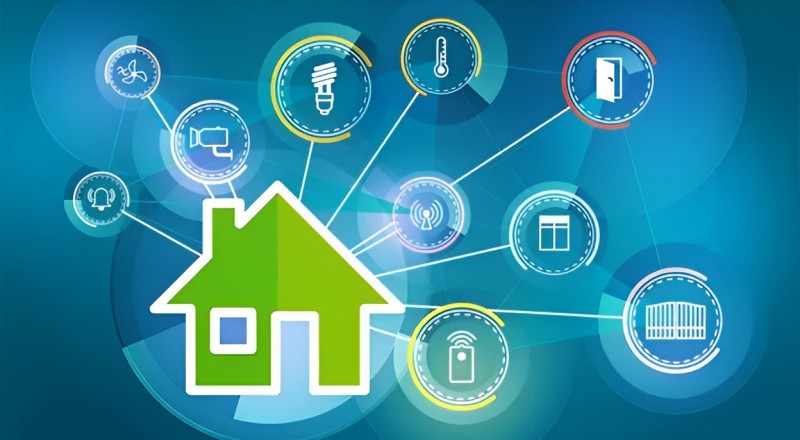
The next integral step is establishing connections between our Node.js automation hub and the plethora of internet-enabled appliances we want to control throughout our home.
We have an array of protocol options for linking up our central hub to devices like smart lighting, thermostats, security systems, sensors, and more.
An extremely popular protocol purpose-built for smart home ecosystems is Zigbee. Zigbee utilizes the ubiquitous 2.4 GHz radio band also used by WiFi, allowing simple wireless communication between the networked devices.
A key advantage is that Zigbee hubs can support enormous meshes of up to 65,000 nodes, allowing us to densely interconnect a vast array of appliances within our environment.
For our Raspberry Pi controller, we would need to attach a low-cost Zigbee USB dongle accessory to communicate over this protocol.
Bluetooth is another wireless connectivity option that comes built-in to many smart gadgets out today. Bluetooth provides solid short-range wireless communication between devices, with typical ranges of around 30 feet.
One limitation is that Bluetooth networks are designed for 1 to 1 rather than mesh connections.
However, we can daisy chain multiple Bluetooth devices to effectively extend the range for our needs. Bluetooth is especially useful for direct control of our smart home from mobile phones and tablets nearby.
WiFi allows direct communication with appliances that are already IP-connected to our home network over standard wireless internet.
The benefit is we can potentially control these devices by simply knowing their local IP address and any necessary account credentials. This provides straightforward integration for appliances already on our network.
Finally, some major smart device brands use their own proprietary or custom wireless protocols rather than standards like Zigbee.
These may require utilizing the manufacturer’s specific hub or bridge, which we would then interconnect with our controller.
As long as the proprietary hub can be linked, we can interface with these external ecosystems.
Thoroughly researching target devices and how they connect before purchase ensures we choose appliances that will integrate smoothly with our centralized Node.js automation server.
The goal is to consolidate control of as many smart gadgets as possible into one intelligent hub.
Control Smart Devices via Node.js Scripts
With devices wired up to our hub, we can now start sending real control commands from Node.js scripts:
For a smart light connected via Zigbee, we can toggle the light on and off programmatically using the outlets control API provided by the Zigbee library. This abstracts away the underlying protocol complexity.
A thermostat with WiFi connectivity and an online API could be controlled by making web requests from Node.js code to adjust the temperature setting up or down.
Music playback could be started on an Alexa or other voice assistant device on the same network by constructing voice control commands as text and sending them to trigger the audio.
A security camera with an accessible video stream URL can have its live feed displayed on our Node.js web dashboard simply by rendering the video in an app route.
The key is leveraging any protocol libraries necessary depending on how target devices connect and communicate. This enables sending practical control signals from our Node automation scripts.
Add Voice Control through Alexa

These days, smart home devices are expected to include voice control for natural, conversational operation. We can add this to our Node.js automation hub by integrating with Alexa and other voice assistants using their development platforms.
Amazon provides an Alexa Skills Kit that allows building custom voice apps for Alexa using Node.js code. We can install the ASK software development kit using NPM to get started.
In the Alexa developer console, we will build a custom voice app linked to our Node server. This app defines intents like “turn on kitchen lights” that contain actions to control the home devices.
When a user speaks a command to an Alexa device, it routes the audio to AWS servers.
Our Node server is called with the derived intent. We configure handler functions to execute the appliance control logic, integrating with devices as we did for the touch apps.
Our code can then respond with either text or audio feedback that Alexa relays through its speech synthesis to confirm outcomes like “Okay, turning on kitchen lights”.
With an Echo smart speaker or Alexa built-in appliance nearby, users can now control devices through natural voice requests.
Advanced skills can intelligently handle conversation trees, contexts, user identity, and more, providing a seamless voice interface.
Other voice assistants like Google Home provide similar SDKs we can leverage to enable voice control. The platforms simplify audio processing, leaving us to focus on device integration logic in Node.js.
With well-designed voice interaction models, we unlock incredible hands-free convenience.
No longer have any need to pull out phones or struggle with apps. Just ask out loud to control your smart environment!
Create Automation Workflows
Beyond manual control, we can add automated behaviors and workflows to provide even more convenience and utility. Automating common smart home scenarios results in greater efficiency, alerts, and peace of mind.
For example, you could automatically turn on smart lights at sunset by integrating your Node.js hub with a weather API to get the daily sunset time for your location.
Write logic to trigger your light control API whenever the current time matches the sunset time from the weather service.
Or adjust your smart thermostat automatically when leaving home by tracking a user’s phone’s GPS location.
If the user’s location moves from home to outside a set radius, have your Node.js server call the thermostat API to switch to an energy-saving away mode.
You could also flash smart lights briefly when your doorbell sensor is triggered to provide a visual notification of a visitor throughout the house.
Listen for the doorbell press event in Node.js and respond by momentarily turning lights on and off. Or send a text notification to homeowners if your kitchen smoke alarm detects smoke while away.
Integrate Node.js with an SMS API to dispatch alert texts to predefined phone numbers if smoke is detected.
When traveling, enable a vacation mode that turns off non-essential devices to save energy. Check a calendar API in Node.js for out-of-office time ranges.
If an upcoming vacation is found, automatically switch devices like lights and sprinklers to low-power modes or off.
Incorporating a Home Assistant 3D floor plan into your automation workflows can also enhance user experience. This visual representation allows users to interact with their smart home devices directly through a 3D model of their home, adding intuitive control and better management of devices by their physical location. Imagine setting automation like adjusting lights or thermostats by simply interacting with their icons on the 3D floor plan.
Look for opportunities like these to automate common home scenarios.
The right automation provides convenience while also improving efficiency, delivering alerts, and offering peace of mind. Intelligent workflows take your smart home to the next level!
Handle Security Best Practices
Given the sensitivity of home environments, properly securing your smart devices, apps, and data is crucial. Here are some key security best practices to follow:
Require users to log in with a username and password to access any administration apps or voice interfaces. This ensures only people you authorize can control devices and settings.
Use voice biometrics to verify authorized users on voice commands for an added layer of protection.
Analyze the speaker’s voice and check that it matches your stored household member voice prints before allowing control.
Encrypt communication channels using HTTPS/TLS across devices, apps, and services.
This prevents eavesdropping on sensitive information like door lock codes during transit. Require valid certificates on all endpoints.
Never hardcode passwords or API tokens. Follow security best practices like environment variables and secret management services to securely store credentials. Rotating secrets periodically is wise.
Isolate smart gadgets onto separate network VLANs and tightly allow only necessary inbound ports. Limiting network exposure of devices reduces attack surfaces.
Actively run tools like npm audit to catch and patch vulnerable dependencies early before hackers can discover and exploit them in your environment.
Conduct thorough penetration testing on devices, apps, APIs, and network infrastructure to surface risks. Address any findings to lock down holes.
Consider security from the start when designing your smart home solutions. Follow best practices to keep homes safe from unauthorized access and cyber risks.
Build Mobile and Web Apps
Finally, to complement voice control, we can build user-friendly apps for easy device management:
A Node.js web app displayed on the Pi screen or any browser could provide touchscreen switches, buttons, and sliders for triggering devices. The real-time state can be synced across clients using web sockets.
A mobile app powered by Node.js on the backend can similarly provide native touch controls for phones and tablets. Push notifications can alert users to triggered events.
Voice input can be supported in apps using the microphone and speech recognition libraries. Any spoken commands are handled just like voice assistant interactions.
Well-designed web and mobile apps make controlling smart environments intuitive from anywhere, on any device. They provide unified interfaces instead of disjointed manufacturer apps.
Conclusion
Building a custom smart home hub with Node.js provides huge advantages over disparate apps – unified control, consistency, automation, and voice capabilities. You can tailor interactions exactly how you want whether through voice, apps, physical buttons, or a combination.
So, what would you create to control devices and simplify management in your smart household? Let us know in the comments!

